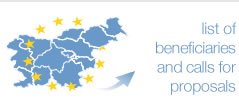Home
Publicity
News on Cohesion Policy implementation
Latest news
European Regional Development Fund turns 40
European Regional Development Fund turns 40
The European Regional Development Fund was born 40 years ago, with the adoption of a Regulation on 18 March 1975 that laid the foundations for today’s EU regional policy.
In December 1974, the European Commission had announced that the then European Economic Community (EEC) of nine Member States was to have a European Regional Development Fund to ‘finance the growth of its most backward areas’.
EUROPEAN COMMUNITY TO HAVE REGIONAL DEVELOPMENT FUND
The European Community will soon have a Regional Development Fund to help finance the economic growth of its most backward areas. This was one of the most important political decisions made by the nine EC heads of government at their “Summit” meeting in Paris December 9-10, 1974.
A fund of 1.3 billion units of account (the forerunner of the euro) was to be established for a trial period of three years starting in 1975.
In allocating resources, priority will be given to the neediest member countries – Italy, Ireland and the United Kingdom.
In 1975 the poorest areas of the EEC were southern Italy, most of Ireland, western and south-western France, northern Holland, parts of West Germany along the (then) eastern border, and large parts of the United Kingdom, particularly Wales and Scotland.
The fund was targeted at the most disadvantaged Member States and the resources divided accordingly: Belgium, 1.5 %; Denmark, 1.3 %; France, 15 %; Ireland, 6 %; Italy, 40 %; Luxembourg, 0.1 %; the Netherlands, 1.7 %; Germany, 6.4 %; the United Kingdom 28 %.
Regional policy, according to the 1974 Summit communiqué, is meant to correct imbalances “resulting notably from agricultural predominance, industrial change and structural underemployment.”
The Commissioner responsible for regional policy at the time was the UK’s George Thomson. He said that the decision to create the regional fund marked ‘an important breakthrough for the whole Community... Although the fund is relatively modest in size, it will be able to bring practical benefits to Europe’s most underprivileged regions as from 1975’.
Origins in the founding Treaty
The founding Treaty of Rome of 1957 had indeed been committed to balanced regional development as a means for achieving integration and reducing the differences between various regions of the European Economic Community.
The first comprehensive guidelines for a regional policy had been proposed by the Commission in 1973. Early moves towards establishing a Regional Development Fund were however delayed by international monetary turmoil and the oil crisis, and it was not until 1974 that agreement was reached.
Community regional policy, said the Commission, should: coordinate and complement, not replace, national regional policies; coordinate the Community’s common policies and financial instruments and reduce congestion in crowded areas in addition to aiding underdeveloped regions.
Three types of actions were eligible under the new Regional Development Fund for up to 50 % of public expenditure support:
- investments in small enterprises creating at least 10 new jobs,
- investments in infrastructure related to point 1, and
- infrastructure investments in mountainous areas, which had to be eligible for the agriculture guidance fund too.
Member States had to apply for ERDF support at project level. Decisions were then taken in a committee of Member States based on Commission proposals.
The initial strategy behind the embryonic regional policy was to correct imbalances resulting notably from agricultural predominance, industrial change and structural underemployment.
Regional Policy Commissioner George Thomson noted that the new fund would ‘restore faith in the Community for millions of ordinary citizens who have waited a long time for the commitment to set up a regional fund to be fulfilled’.
At a time when the UK was renegotiating its terms of membership, he also pointed out that the UK would be entitled to 28 % of the fund while its contribution to the fund was less than 17 %. He also stressed that the new policy would be concerned about the problems of ageing industry (typical of the UK at that time) as well as the Community’s agricultural problems.
The decision made in Paris proves that the solidarity among EC countries is a reality, even in a time of formidable pressure upon their economies. The effective launching of a regional policy is part of broader effort to bring European economies more closely together.





